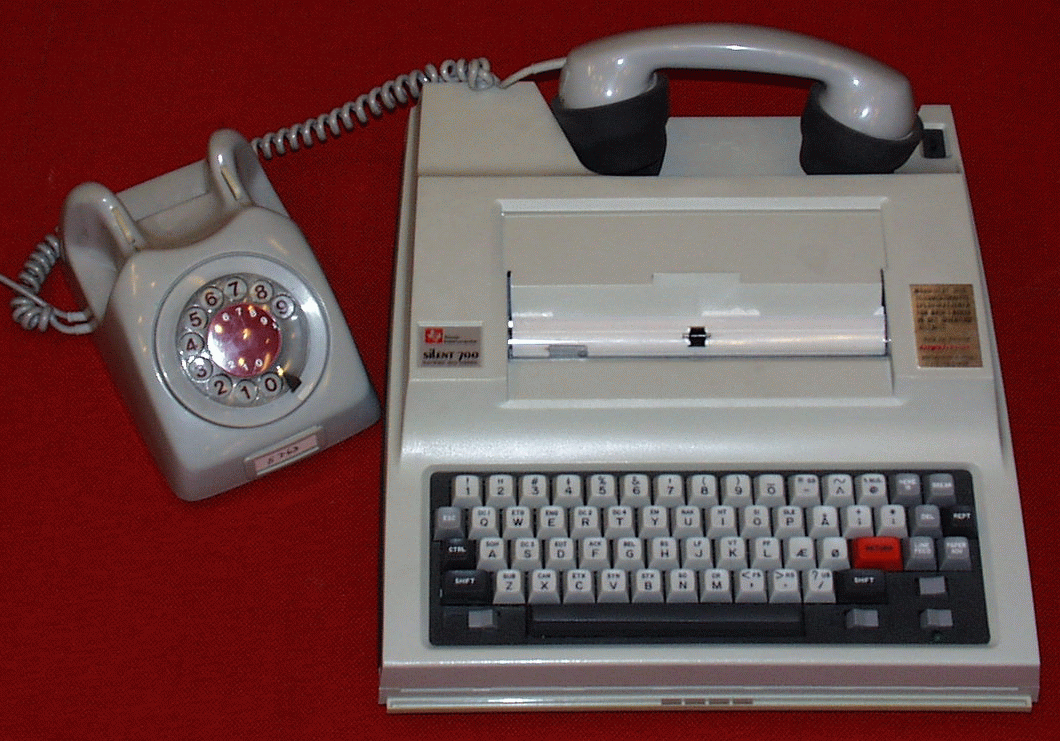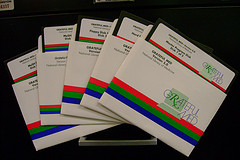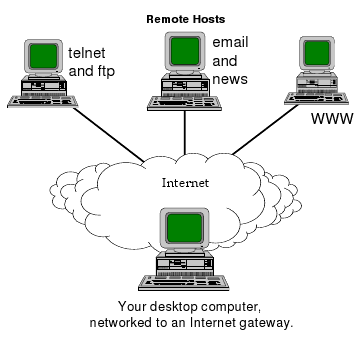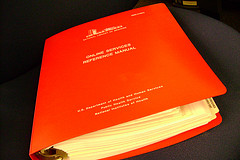Sep
29

Posted by Maryanne Blake on September 29th, 2009
Posted in: Technology
1980 – In library school I thought: “Why do I have to take a class in computing? I am going to be working with people, not machines.”
1982 – As a trainee at the VA Medical Center in Washington DC learning to search MEDLINE was challenging, and FUN. The Texas Instruments Silent 700 with built in acoustic coupler printed the results on a roll of thermal paper while ripping along at 300 baud. No more searching through multiple volumes of Index Medicus.

Texas Instruments Silent 700 with Acoustic Coupler*
1983-4 – I remember ELHILL. So many databases, so little time: MEDLINE, AVLINE, BIOETHICSLINE, POPLINE, CATLINE, SERLINE…
1985 – Moved to Seattle at the same time as NLM’s automated interlibrary loan request and referral system, DOCLINE, came into existence. Hurray – no more ALA ILL forms!
1986 – Grateful Med was introduced by NLM. Who will ever teach all those health professionals how to do end-user searching of MEDLINE? And who will explain the pricing structure for doing a search?

Grateful Med 5 1/4" Floppy Disks
1990 – MEDLINE on CD-ROM came to the Seattle Veterans Administration Medical Library. As a librarian there I was proud that we had the first CD-ROM tower in the medical center. We thought we were cutting edge.
1992 – I joined the NN/LM PNR as the Outreach Coordinator and became the person who was going to teach all those health professionals how to do end-user searching of MEDLINE and will explain the pricing structure for doing a search.
1992 – The first NN/LM PNR presentation was a talk about the Internet to OHSLA in Eugene, Oregon. Of course I had to figure out what the internet was before I talked about it. Thanks Kathy Murray and Peggy Burt for all your teaching and hands-on demonstrations before that talk. I couldn’t have done it without you.
1993 – I taught my first Internet class for librarians at PNC/MLA in Portland, Oregon with Leslie Wykoff from OHSU. We titled it “Down the Rabbit Hole” because it felt like at every turn you would meet strange and wondrous creatures like telnet (and Hytelnet), FTP, Archie, Veronica, and of course Gopher.

Early Cloud Computing
1993 – HLIB-NW, “a discussion list created and maintained by Maryanne Blake (blakema@u.washington.edu) and Michael Boer (boerm@u.washington.edu). It debuted on a NorthWestNet host in November 1993, with 80 charter subscribers.” It’s still going strong today.
1994 – The RML hosted the PILOT Connections Project in the Pacific Northwest, connecting some hospitals and their libraries to the Internet and the World Wide Web. Marcy Horner, one of the participants said that PILOT stood for “People In Lots Of Trouble.” All those librarians were Internet pioneers – Marcy Horner, Edean Berglund, Steve Rauch, Susan Long, Susie Holt, Judith Bendersky, and Cheryl Goodwin.
1995 … – Web browsers I have known and loved: Mosaic, Lynx, Cello, Opera, Netscape Navigator, Internet Explorer (multiple versions), Mozilla, Firefox and now Safari for my Mac.
1995 – Michael Boer taught a class to librarians on how to make their “first home in HTML” and I discovered the power of creating web pages.
1996 – Internet Grateful Med (IGM) provided a user-friendly, Web-based interface to many NLM databases. And access was FREE to anyone anywhere in the world with an Internet connection. Was I glad I didn’t have to explain Grateful Med pricing structure to people at conferences where the NLM and the RML exhibited? You bet!
1996… – The last paper issue of the Supplement, NN/LM PNR’s newsletter was published. Electronic issues, sent via email, had been produced since 1994. Renamed the Dragonfly in 1998, the newsletter got “blogged” in 2005. RSS feeds anyone?

Dragonfly, a gift from Dolores Judkins
1997 – PubMed, IGM’s rival, provided a Web-based, user-friendly way to search MEDLINE and other databases in NLM’s Entrez retrieval system. How do I explain the difference between IGM and this?
1999 – September 30, 1999, a sad day. Direct public access to ELHILL was no more. Goodbye “Stop Y and eng (la).”

The "Red Book" aka the ELHILL Bible
1999 – Google came on the scene to challenge Alta Vista and Yahoo as a search engine. In eleven years “google” has become a verb and health professionals tell me they just “google it” when they need health information. Scary.
2001… – September, 2001, IGM bit the dust. PubMed is going strong with numerous redesigns; another one is coming soon (October of 2009 they say).
2009 – And the changes keep coming – Wikis, blogs, Facebook, Twitter, podcasts, screencasts, YouTube, cloud computing, the list goes on. I feel fortunate that my colleagues here at the PNRML and medical librarians around the Pacific Northwest, and indeed around the country, are embracing the changes. As a matter of fact they are at the cutting edge of many of these trends in technology.
Ms. Caputo, thank you for great job you did leading me into the world of computers and technology back in 1980. I’m hooked!
*Thanks to Richard at www.xmission.com for permission to use the photo of the TI Silent 700